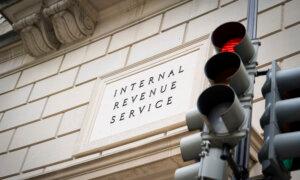Retirement planning is one of the most important financial endeavors you will ever undertake. Suffice it to say, whether retirement is decades away or just around the corner, taking the right steps today can make a big difference.
Now that we’ve established that, let’s dive into what to do and what not to do when saving for retirement.
The Do’s of Retirement Saving
Get a Head Start on Saving
When you start saving early, your money has more time to grow thanks to compound interest. By the time you retire, even small contributions made consistently during your 20s or 30s can add up to a sizable nest egg.As an example, investing $200 a month at an average return of 7 percent from 25 to 65 can grow to more than $500,000. However, this amount is reduced to about $240,000 if you start at 35 instead of 25.
Take Advantage of Employer-Sponsored Plans
If your employer offers a 401(k) or similar retirement plan, consider contributing to it—especially if it matches your contribution. Matches are essentially free money. So not contributing enough to qualify for one means you’re leaving money on the table.You should also contribute enough to maximize your employer’s match. As your income grows, you can gradually increase your contributions.
Diversify Your Investments
In order to optimize growth, a portfolio must be balanced to reduce risk. To mitigate losses during market downturns, diversify your investments across stocks, bonds, mutual funds, and other asset classes.In general, the closer you are to retirement, the more conservative your portfolio should be. Since they have more time to recover from market volatility, younger investors can afford to take more risks.
Maximize Tax-Advantaged Accounts
Take advantage of tax-advantaged retirement accounts such as individual retirement accounts (IRAs), Roth IRAs, and 401(k)s. These accounts offer significant tax benefits, either by deferring taxes on contributions (traditional accounts) or offering tax-free withdrawals in retirement (Roth accounts).However, to fully benefit from these benefits, you must contribute the maximum amount each year.
For 2025, the maximum retirement contributions are:
- 401(k): $23,500, plus $7,500 for those over 50
- IRA: Up to $7,000 for those under 50, plus an additional $1,000 for those over 50
- Qualified Longevity Annuity: $210,000
Clearly Define Your Retirement Goals
Prepare for retirement by determining how much money you’ll need. Consider your desired lifestyle, healthcare costs, travel plans, and inflation. Use retirement calculators to estimate how much you should be saving to meet your retirement goals.Let’s say you plan to retire at 67 and spend $50,000 annually in retirement. You would need to save 25 times that amount, or $1.25 million.
Review Your Plan Regularly
As life changes, so do financial markets. As such, you should review your retirement plan at least once a year to ensure you are on the right track. Adjust your savings rate, asset allocation, or retirement goals if necessary.In times of market volatility, rebalancing your portfolio can help you maintain the level of risk you want.
Pay Off High-Interest Debt
Before aggressively saving for retirement, tackle debts with high interest rates, such as credit cards. By paying off this debt, you can save more for retirement and improve your financial stability.The Don’ts of Retirement Saving
You Shouldn’t Rely Solely on Social Security
The purpose of Social Security is to supplement your retirement income, not to replace it. Depending solely on these benefits can result in a substantial retirement budget shortfall.As of November 2024, the average Social Security benefit was $1,788.12 monthly or $21,457.44 annually. As per the Bureau of Labor Statistics, the average annual cost of living in retirement (for people 65 and older) is around $52,141 per year (approximately $4,345 per month). Social Security benefits will not cover your retirement expenses.
Don’t Cash Out Early
If you withdraw funds from your retirement account before retirement, you will lose your savings and be subject to penalties and taxes. For example, cashing out $10,000 from a 401(k) at age 35 would result in a loss of over $50,000 by retirement.In the long run, early withdrawals can negatively affect your finances.
Never Neglect an Emergency Fund
You should have 3–6 months’ expenses in your emergency fund. Why? For unexpected expenses like medical bills or car repairs, this can prevent you from tapping into your retirement savings.Keep your emergency fund in a high-yield savings account for easy access and better returns.
Don’t Ignore Inflation
Over time, inflation erodes your savings’ purchasing power. If you don’t account for it, you may find yourself unprepared. Invest in assets that historically outpace inflation to preserve your wealth, such as stocks.Lifestyle inflation shouldn’t derail your savings.
You’ll be tempted to spend more on luxuries when your income grows. Instead, increase your retirement contributions. Inflation can delay your financial independence and reduce your savings capacity.
I would suggest that you automatically increase your retirement contributions whenever you get a raise.
Don’t Skip Professional Advice
A financial advisor can help you navigate the complex world of retirement planning. In addition to providing customized strategies, they can optimize your portfolio and help you avoid costly mistakes.When unsure about investing strategies or feel overwhelmed, seek professional advice.
The Cost of Healthcare Shouldn’t Be Overlooked
Healthcare can be one of the biggest expenses in retirement. According to Fidelity, a 65-year-old can expect to spend an average of $157,500 on healthcare and medical expenses during retirement. As such, it’s important to save for out-of-pocket expenses, Medicare premiums, and long-term care needs.If your health plan has a high deductible, consider opening an health savings account (HSA). With a HSA, you can deduct contributions, grow your account tax-free, and withdraw qualified medical expenses tax-free.
Balancing the Do’s and Don’ts
To achieve financial security in retirement, discipline, planning, and smart decisions are required. To build momentum, start small and actionable. Establish automatic contributions to your retirement accounts and review your progress annually, for example.Example Action Plan:
- Consider opening or maximizing a Roth IRA.
- Get rid of high-interest credit card debt.
- Contribute 1 percent more to your 401(k) each year.
- Get personalized advice from a financial advisor.
Final Thoughts
Saving for retirement is a marathon, not a sprint. To set yourself up for a fulfilling and secure retirement, focus on the do’s and avoid the don’ts. Start as early as possible and be consistent, and you will be better prepared for life after work.So, what are you waiting for? Now is the time to take the first step—your future self will thank you for it.
By John Rampton
The views and opinions expressed are those of the authors. They are meant for general informational purposes only and should not be construed or interpreted as a recommendation or solicitation. The Epoch Times does not provide investment, tax, legal, financial planning, estate planning, or any other personal finance advice. The Epoch Times holds no liability for the accuracy or timeliness of the information provided.








